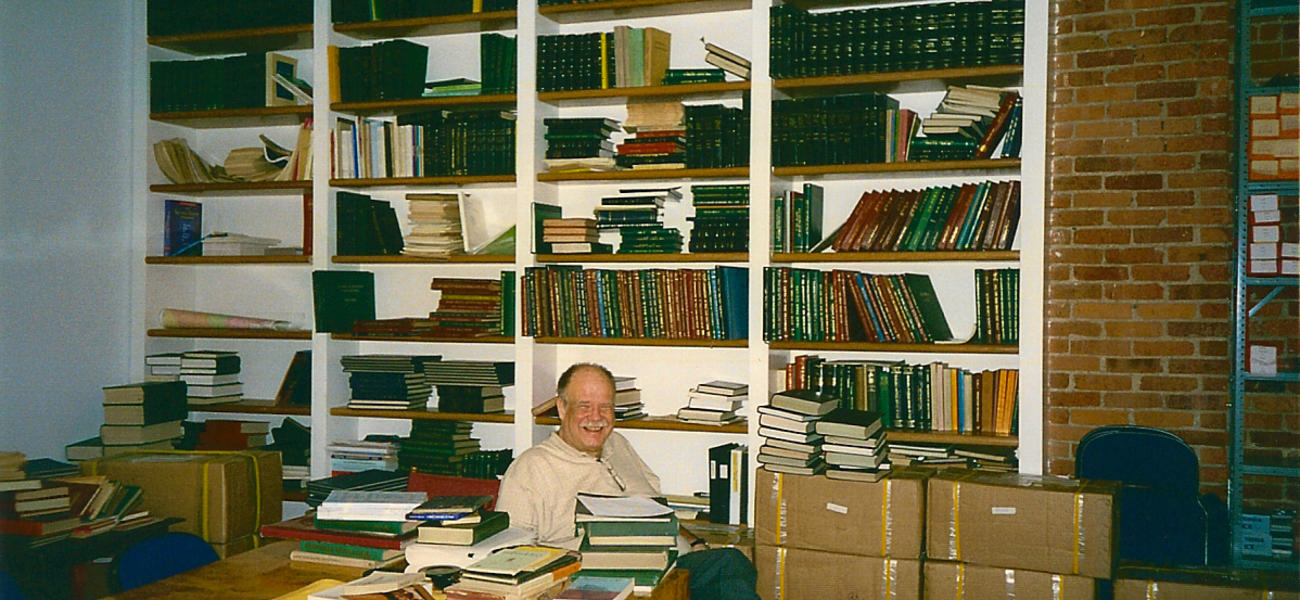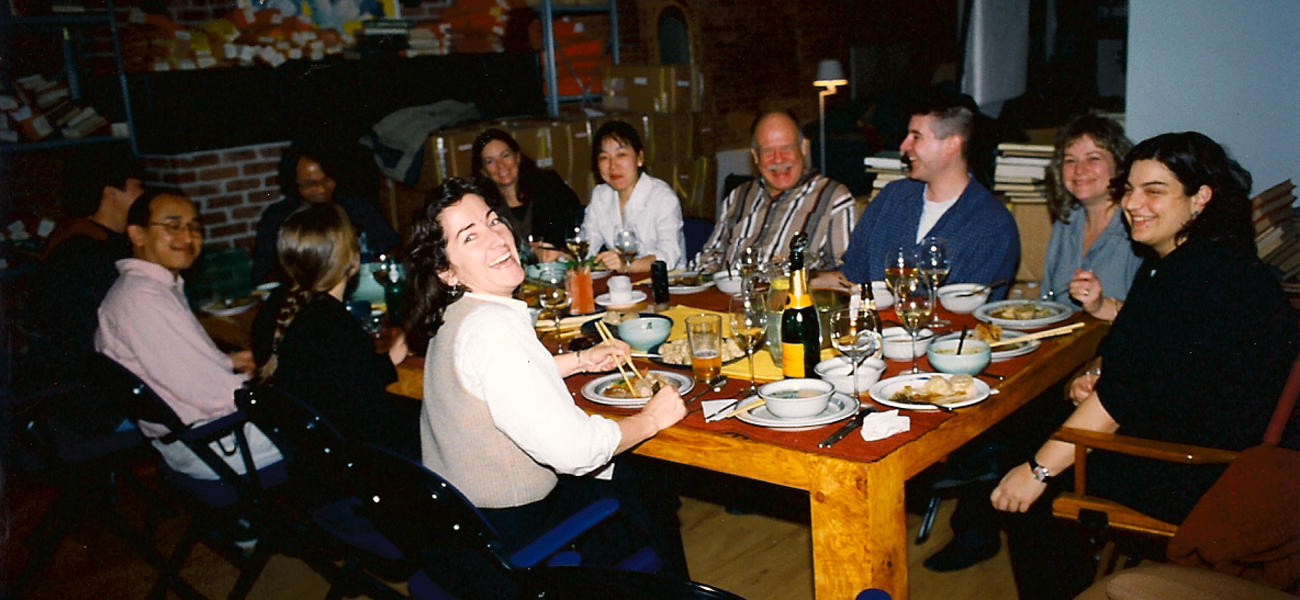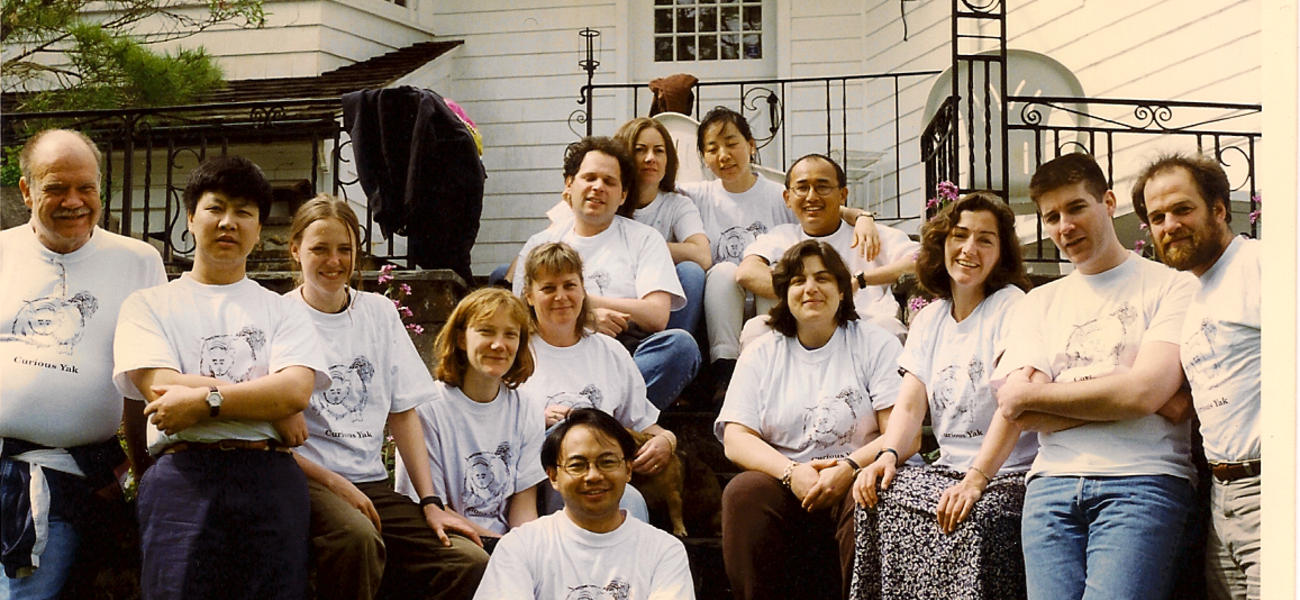I remember the first time I spoke to Gene Smith on the telephone. It was 1996 and I was in the office kitchen. He was the one–everybody said so. He was the one to get Trace Foundation’s Tibetan library off the ground. He knew everything there was to know about Tibetan literature and libraries. He was personally responsible for reprinting thousands of Tibetan volumes and introducing them to the West. He had encyclopedic knowledge of Tibetan Buddhism. He was deeply respected throughout the world. Too bad he was working in Egypt. Too bad he was committed to the Library of Congress. Too bad the era of Public Law 480 was over. But then again…
I can’t remember the exact date of that first phone call (Gene would, of course,) but I do remember the outcome–a stop in New York to discuss the possibility of working together further. It turned out that Gene was ready to retire from the Library of Congress, and was considering what to do next. He had been keeping up with some of the trends in publication of Tibetan works in China, and was intrigued by the idea of a new era in Tibetan book collecting. He agreed to a consultancy with the Foundation, and began a new, post-Library of Congress life.
A few months after that meeting, trucks began to arrive with boxes… and boxes… and boxes–more than 600 of them, shipped from Cairo. Mostly books came, but there were also computers and notebooks. We had lined the entire office with steel bookcases, and it didn’t take long before they were filled. Unsurprisingly, we didn’t have all the linear feet required, but we had ample storage space, and Gene was able to begin work.
In the roughly two years that Gene spent with Trace Foundation, he and a small team comprised Himalayan and Inner Asian Resources (HIAR). Working through the Foundation’s network and his own, Gene was able to identify reliable sources for the hard-to-come-by materials that were the focus of the library’s collection. Some 2,500 volumes were collected on Buddhism, social sciences, literature and other topics, mostly in Tibetan but also in Chinese and English. Gene also began to explore how advances in information technology could be used to document and provide insights into Tibetan literary traditions and social networks. He hosted several delegations of scholars and leaders from the Tibetan plateau and, when the library relocated to its own space nearby, he opened our doors to everyone, as he had always opened his home in the past.
The loyal friendship of Ramon Pratz and Mangoram Manga helped Gene settle back into life in the U.S. after decades abroad, and to face the ups and downs of a start-up foundation. Upon his return, Gene moved into an apartment on East 18th Street, only a few blocks from where he would come to spend the rest of his life. Whether at home or at the office, whatever his mood, he worked tirelessly, obsessively. His appetite for literature and for understanding was insatiable, and his single-minded focus on the Tibetan plateau, through all the centuries of its history, was unflagging.
In 1998 Gene moved on to Cambridge, where, with Leonard van der Kuijp, theTibetan Buddhist Resource Center was born. Within a few years, due to the generosity of Don and Shelly Rubin, TBRC had moved to a new location just blocks from Gene’s old office at HIAR–which had since become Trace Foundation’s Latse Library. In the years that Gene spent building TBRC and conceptualizing and delivering on its incredible promises, he found a new home and a renewed purpose. Gene lived next door to the Rubin Museum, and within striking distance of a host of institutions with a focus on Tibet– Columbia University with its modern Tibetan studies and religion programs, Tibet House, The Jacques Marchais Museum on Staten Island and the Newark Museum’s Tibet Information Zone, not to mention religious establishments. In his last years Gene found himself again back at a hub of the Tibetan cultural world.
When I think of Gene, I think of those rows and rows of bookcases. I imagine the banging of the famous typewriter of his earlier years, and the whirring of the computers all over the world with the knowledge he shared. I think of his mind and what an incredible force it was–a unique power, a tumult of knowledge and craving and excellence. It was a force that needed to lay itself down in linear feet, like a locomotive laying its own tracks, around the world, in words. And now we stand back and marvel at what he created, word by word, day by day, year by year. He has left a legacy that will last, and that will continue to grow. Because he was the one–the one E. Gene Smith.




